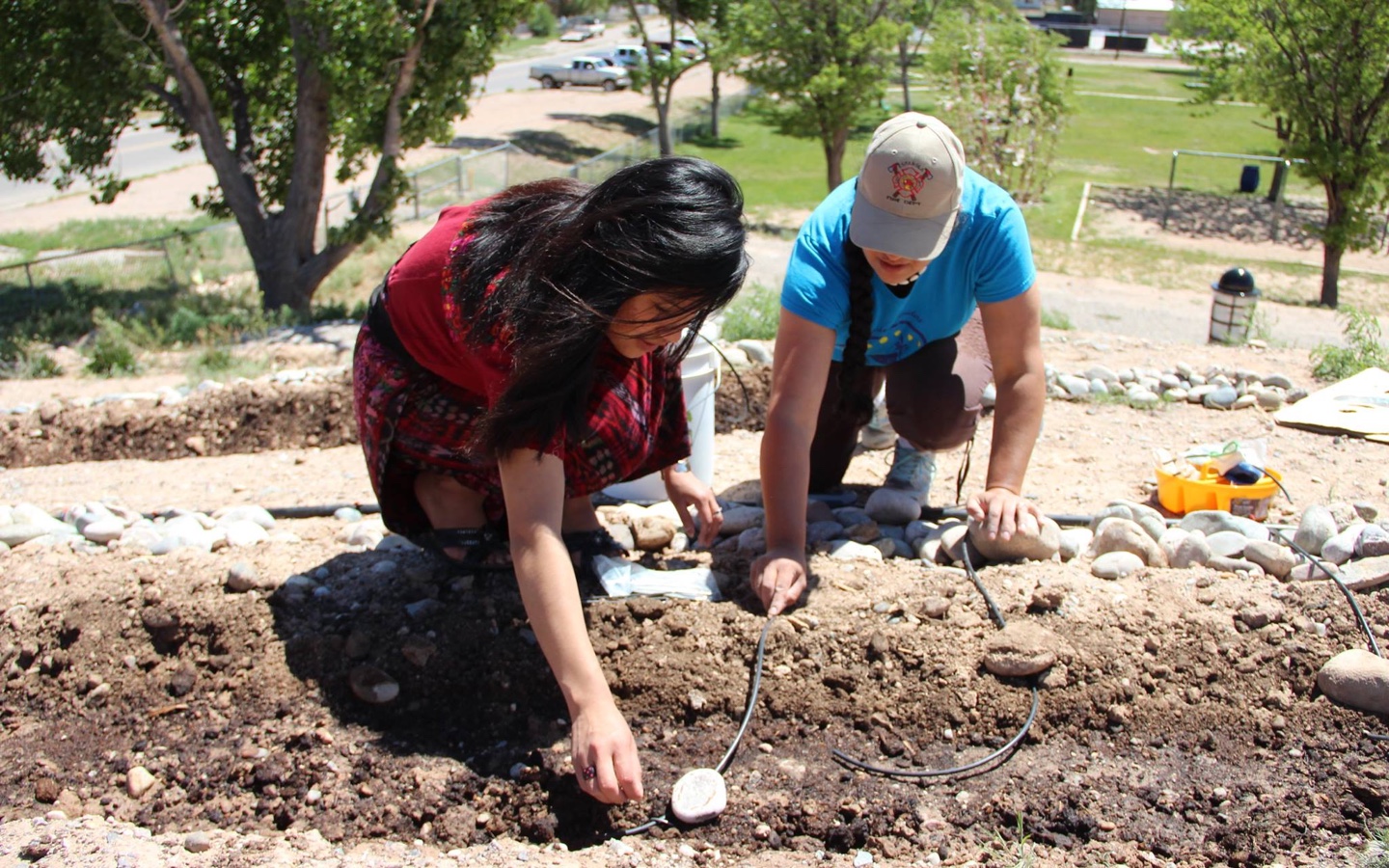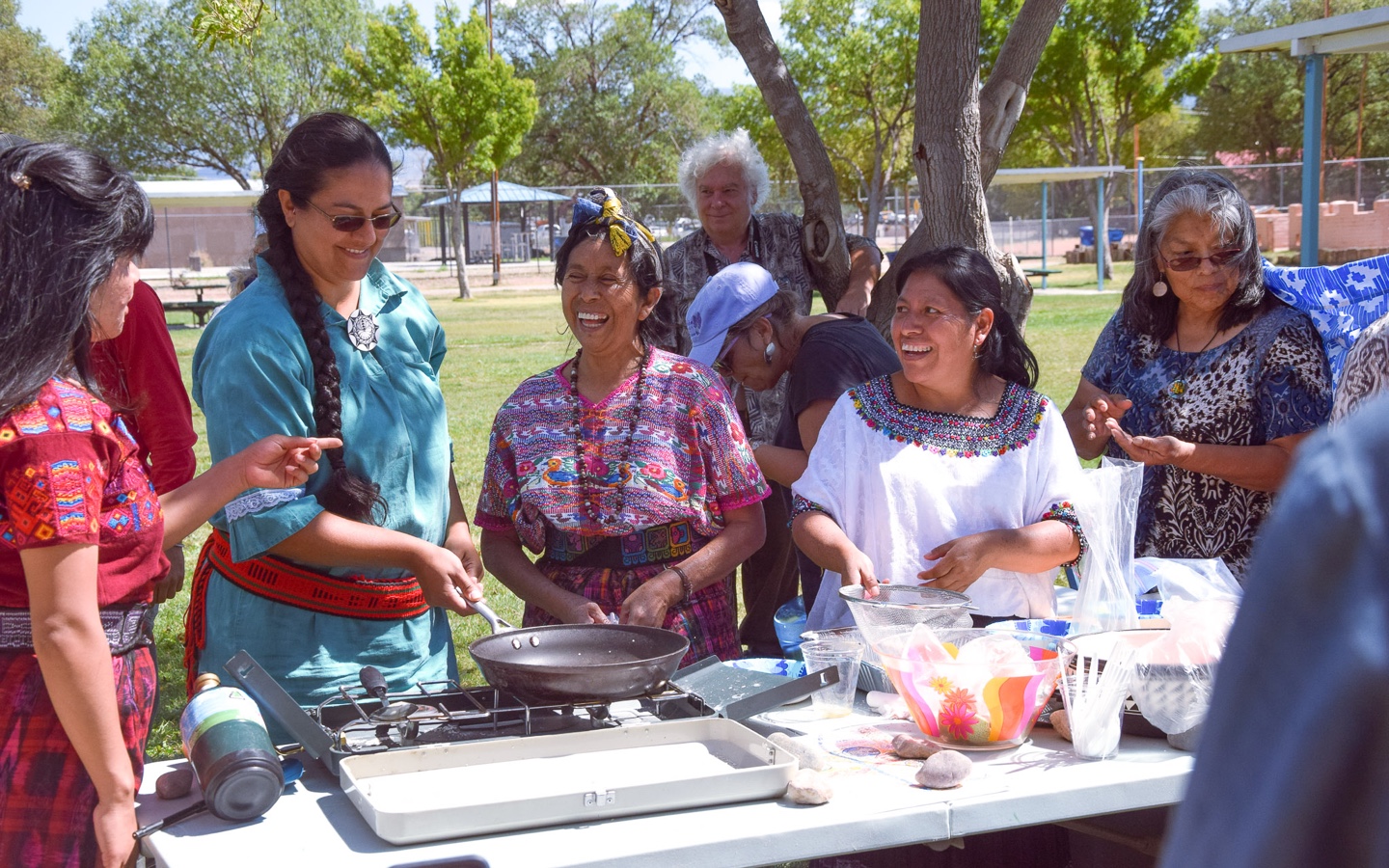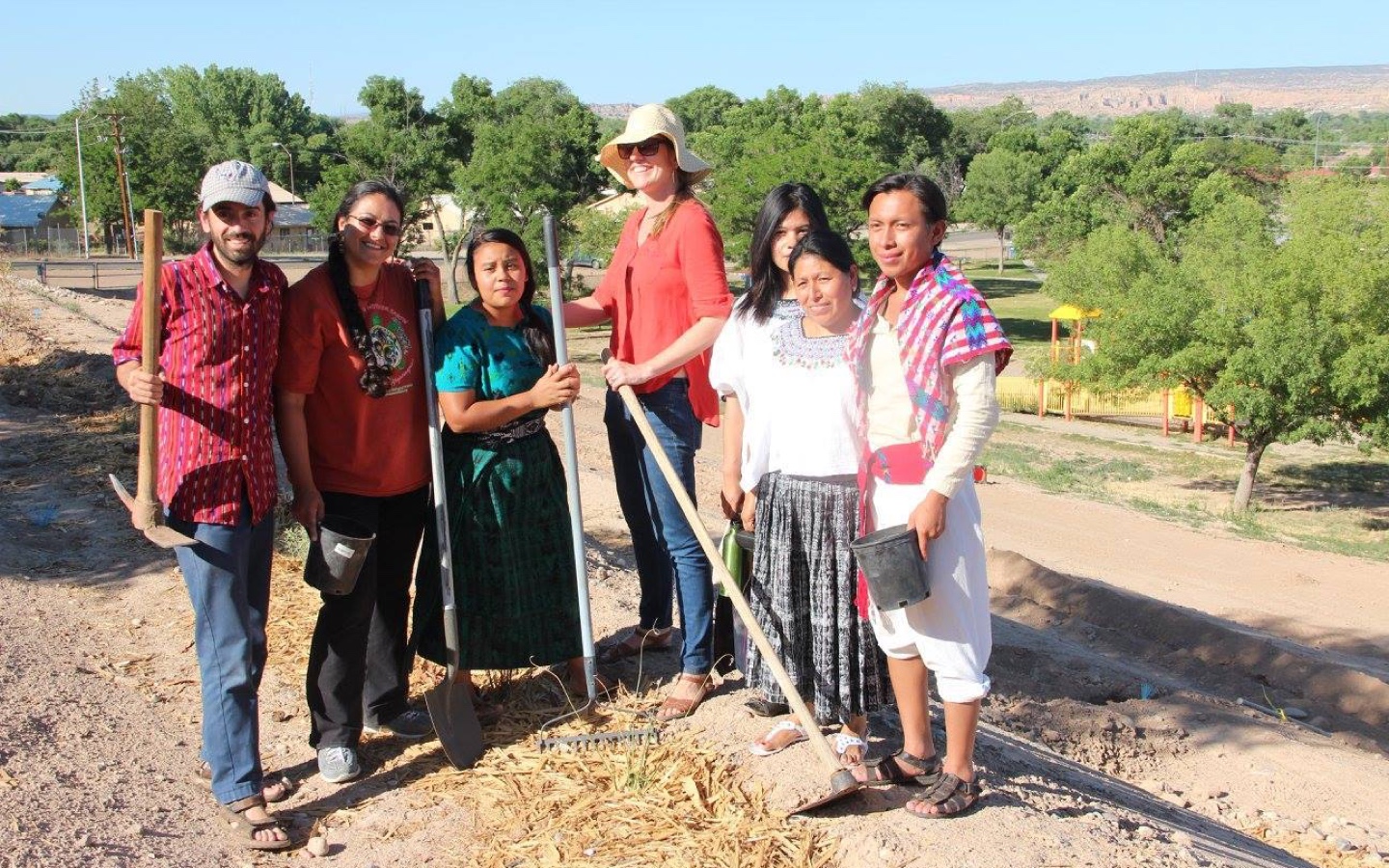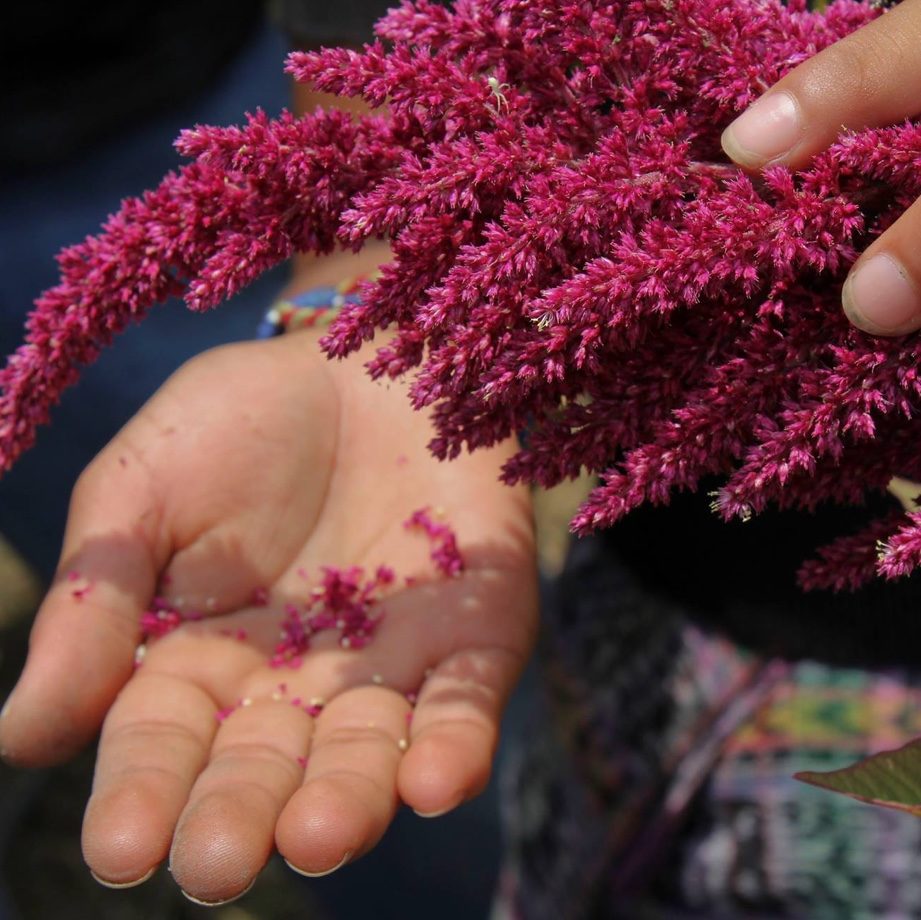Sustainability
This Permaculture Garden Is Healing a Town
Tewa Women United’s Healing Foods Oasis in Española, New Mexico, is a vehicle for mutual aid, environmental justice, and food sovereignty.
This month, we’re celebrating the heroes that embody this year’s Earth Day theme: Restore Our Earth. For our fourth article in the series, we’re spotlighting Tewa Women United. Don’t miss our first three stories: Are Solar Co-ops The Future of Clean Energy?, The Nonprofit Reducing Plastic Waste One Community at a Time, and The Ambitious Plan to Preserve 30 Percent of the U.S. by 2030
The transformation engenders hope. Before: a neglected, forgettable, weed-ridden median prone to erosion. Now: the Healing Foods Oasis, in Española, New Mexico, a terraced permaculture with more than 200 native species — edible, medicinal, herbal, pollinator plants, soil builders — each plays a role. More than just an incredible ecological turnaround, the garden is a vehicle for mutual aid, environmental justice, and food sovereignty.
The Healing Foods Oasis is a collaboration between the City of Española and Tewa Women United, a nonprofit founded and led by Native women to support families, communities, and the Earth (the term Tewa is a reference to the linguistic group and community of Pueblo people in this area along the Río Grande). Beata Tsosie-Pena, TWU’s environmental health and justice program coordinator, had the vision and led the project, but she says it was built by the community — forged by 6,000 volunteer hours.

Tsosie-Pena used to shake her head at the annual, sisyphean effort to refill dirt where water runoff had eroded the slope. In 2012, she pitched the city on a dry farming permaculture that relied on Indigenous practices. They broke ground in 2016.
“The garden is promoting indigenous dryland farming techniques and rainwater catchment systems — those ways that the first peoples were doing farming, using the watershed as a whole in dryland conditions, something we need to go back to with climate change impacts,” says Tsosie-Pena. “We need to be practicing these kinds of Indigenous technologies on a large scale.”
Nestled between the 13,000-foot Truchas peaks and the Jemez Mountains in New Mexico’s Río Grande Valley, humans have lived in what is now called Española for thousands of years. It’s where three rivers meet: the Río Grande, the Chama, and the Río Santa Cruz. It’s also a border town — the sovereign Indigenous nations of Santa Clara Pueblo and San Juan Pueblo are next door. Up the hill in Los Alamos, some of the brightest scientists in the world work on state-of-the-art bombs — the Los Alamos National Laboratory was the site of the Manhattan Project that produced America’s first nuclear bombs during World War II. Environmental groups have sued “The Lab,” as it’s known, for the public health threat its pollution, which flows downhill toward Española, poses to local water resources.

These two towns north of Santa Fe represent stark inequalities. Los Alamos, where 70 percent of the population is white, claims the most millionaires per capita in the country. Española, which is 87 percent Hispanic or Latino, has a median household income of $34,000 — half the national average — and a poverty rate of 25 percent. The Healing Foods Oasis, in its small part, is a solution at the intersection of many of the environmental injustice issues facing the Española community.
“The benefits to local economies, food economies — just the importance of maintaining that self determination and sovereignty as a community to feed ourselves and support ourselves in times of survival is really important for the overall wellness of a community,” says Tsosie-Pena.
Anyone can harvest what grows in the Healing Foods Oasis. The community guidelines simply ask that people only take what they need. Tsosie-Pena hopes the garden becomes self-sustaining and wants to use the model in other locations. A big part of the project, too, is education. Through workshops targeted at area youth, the Healing Foods Oasis is passing on its lessons to the next generation.

“Despite three waves of colonialism that Native peoples have had to endure, our ancestors made sure to pass on those land-based strengths as peoples, and the knowledge continues to pass on,” says Tsosie-Pena. “That knowledge and guidance, to me, it’s a lot stronger and more powerful than any kind of Western colonial mindset that was imposed on our peoples, so that’s where a lot of the hope lies in active resistance, putting community faith into the living relations that we have with our environment on a daily basis.
“I think that Indigenous peoples are, at our core, the land, are this place. Keeping true to who we are in ecologies, that’s the piece that has not been assimilated, that has kept us through the years.”
Want to help? You can donate to Tewa Women United here. If you’re in the area and want to volunteer, you can fill out the form at the bottom of this page.

Shop Pillows
The Essential Organic Pillow Collection
Gentle, breathable, non-toxic support.




